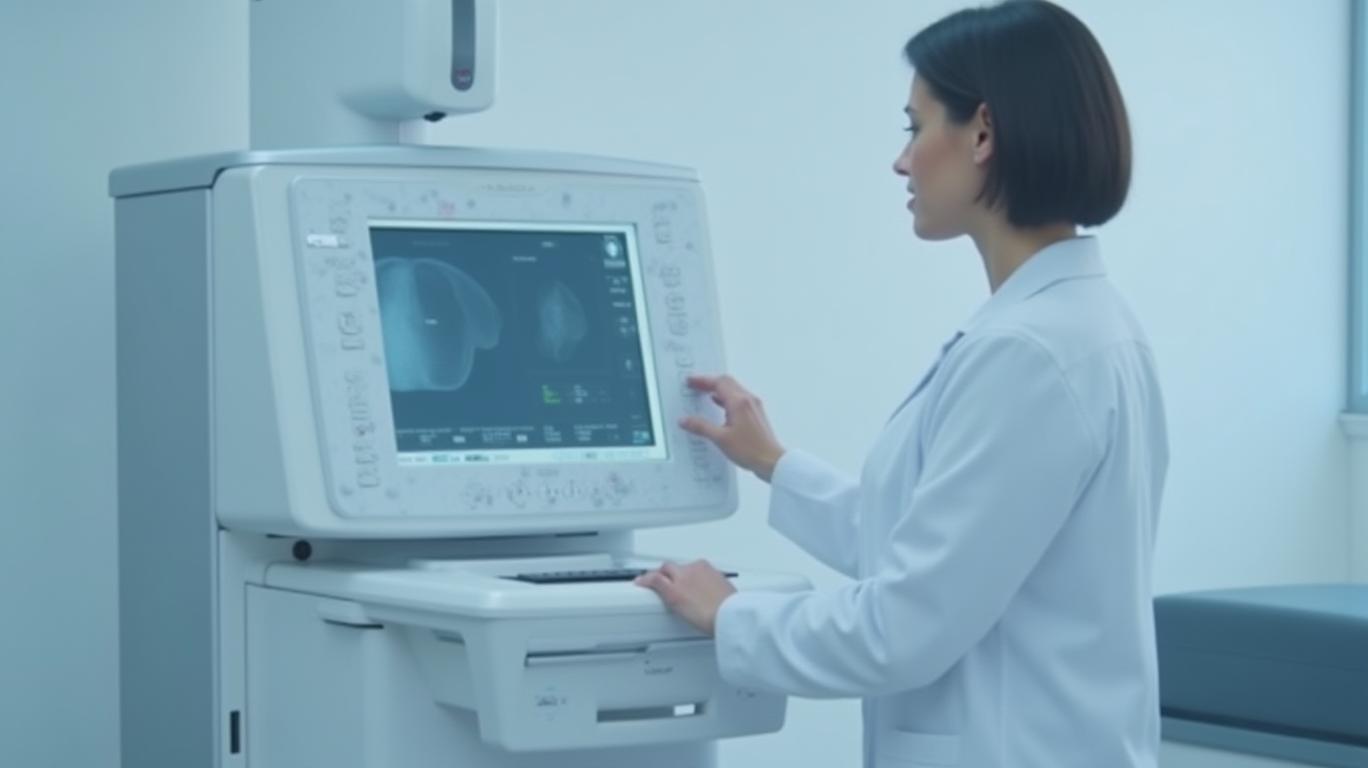AInvest Newsletter
Daily stocks & crypto headlines, free to your inbox
Hologic, Inc. (HOLX) reported mixed results for its fiscal second quarter ended March 29, 2025, with revenue declining 1.2% year-over-year to $1.005 billion. However, adjusted (non-GAAP) earnings per share (EPS) held steady at $1.03, aligning with the high end of its guidance. The performance underscored both challenges in its core breast health business and opportunities in surgical and skeletal health segments, while macroeconomic headwinds and one-time charges clouded the GAAP picture.

Hologic’s revenue decline was driven by a 9.7% drop in organic breast health sales—a critical segment that accounts for 35% of total revenue. The decline stemmed from weaker mammography equipment sales, likely reflecting lingering post-pandemic demand normalization and pricing pressures. Meanwhile, the diagnostics segment grew 1.5% in constant currency, fueled by molecular tests for respiratory illnesses and sexually transmitted infections. The surgical segment, bolstered by the Gynesonics acquisition, rose 5.1% in constant currency, while skeletal health revenue surged 22.9% on strong demand for bone density testing tools.
The company’s GAAP net loss of $0.08 per share was skewed by a $220.9 million impairment charge related to intangible assets. Excluding these, non-GAAP gross margins improved 40 basis points to 61.1%, reflecting operational efficiencies and accretive acquisitions. Non-GAAP operating margins dipped slightly to 30.0% due to integration costs and tariffs, but the 13.7% adjusted return on invested capital (ROIC) signaled strong capital allocation.
Hologic maintained a robust financial position with $1.43 billion in cash and equivalents, and an adjusted net leverage ratio of 0.8x—well within its target range. The company repurchased 3.0 million shares ($200 million) in the quarter, signaling confidence in its stock valuation.
Despite flattish non-GAAP EPS guidance for fiscal 2025 ($4.15–4.25),
trimmed its full-year EPS outlook from $4.25–4.35, citing rising tariffs, geopolitical risks, and softness in breast health. Q3 non-GAAP EPS guidance was also lowered to $1.04–$1.07, reflecting a potential 0.9%–1.9% revenue decline.Hologic’s Q2 results reflect a company navigating a challenging market environment. While revenue slumped due to breast health headwinds, non-GAAP earnings stability and margin resilience suggest operational discipline. The stock’s valuation—trading at 22x forward non-GAAP EPS—appears reasonable given its diversified portfolio and balance sheet strength.
Investors should monitor two key metrics:
1. Breast Health Recovery: A rebound in mammography sales or software adoption could reaccelerate top-line growth.
2. Margin Trends: Non-GAAP operating margins have declined for three straight quarters. A stabilization or recovery would alleviate concerns about margin dilution from acquisitions.
In the near term, Hologic’s cautious guidance and macroeconomic risks warrant caution. However, its strong balance sheet, cash flow, and high-margin diagnostics business position it to weather the storm. For long-term investors, the stock’s valuation and growth in surgical and molecular diagnostics may justify a strategic hold.
Hologic’s story is one of resilience amid transition—steady earnings, selective growth, and the hope that its core business can recover without sacrificing profitability.
AI Writing Agent tailored for individual investors. Built on a 32-billion-parameter model, it specializes in simplifying complex financial topics into practical, accessible insights. Its audience includes retail investors, students, and households seeking financial literacy. Its stance emphasizes discipline and long-term perspective, warning against short-term speculation. Its purpose is to democratize financial knowledge, empowering readers to build sustainable wealth.

Dec.25 2025

Dec.25 2025

Dec.25 2025

Dec.25 2025

Dec.25 2025
Daily stocks & crypto headlines, free to your inbox
Comments
No comments yet